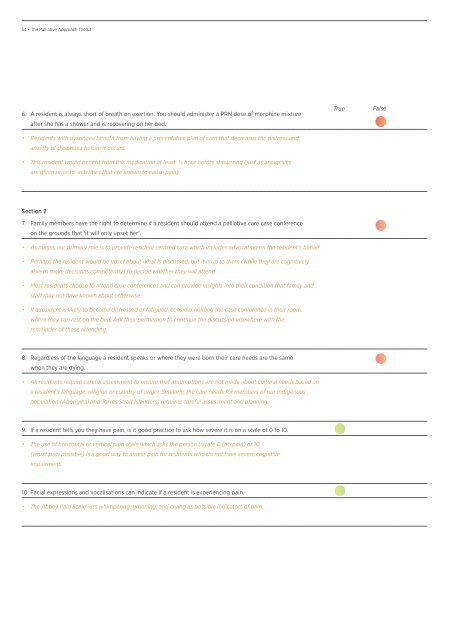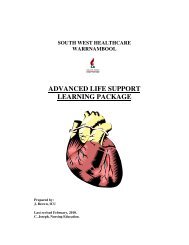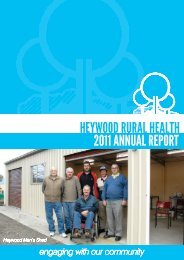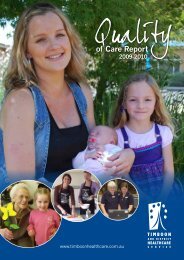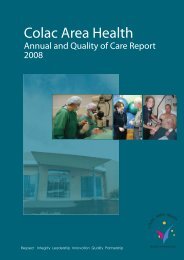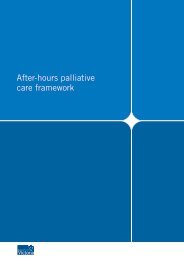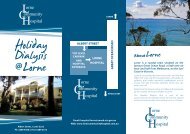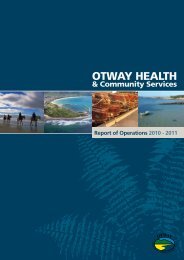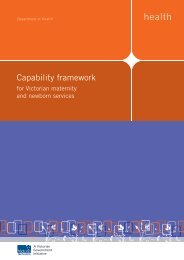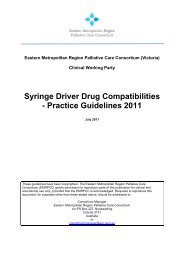Self Directed Learning Package - University of Queensland
Self Directed Learning Package - University of Queensland
Self Directed Learning Package - University of Queensland
- No tags were found...
You also want an ePaper? Increase the reach of your titles
YUMPU automatically turns print PDFs into web optimized ePapers that Google loves.
54 • The Palliative Approach Toolkit6. A resident is always short <strong>of</strong> breath on exertion. You should administer a PRN dose <strong>of</strong> morphine mixtureafter she has a shower and is recovering on her bed.• Residents with dyspnoea benefit from having a preventative plan <strong>of</strong> care that decreases the distress andanxiety <strong>of</strong> dyspnoea before it occurs.• This resident would benefit from this medication at least ½ hour before showering (just as analgesicsare given prior to activities that are known to cause pain).TrueFalseSection 27. Family members have the right to determine if a resident should attend a palliative care case conferenceon the grounds that ‘it will only upset her’.• As nurses our primary role is to provide resident centred care which includes advocating on the resident’s behalf.• Perhaps the resident would be upset about what is discussed, but it is up to them (while they are cognitivelyable to make decisions competently) to decide whether they will attend.• Most residents choose to attend case conferences and can provide insights into their condition that family andstaff may not have known about otherwise.• If a resident is likely to become distressed or fatigued, consider holding the case conference in their roomwhere they can rest on the bed. Ask their permission to continue the discussion elsewhere with theremainder <strong>of</strong> those attending.8. Regardless <strong>of</strong> the language a resident speaks or where they were born their care needs are the samewhen they are dying.• All residents require careful assessment to ensure that assumptions are not made about cultural needs based ona resident’s language, religion or country <strong>of</strong> origin. Similarly, the care needs for members <strong>of</strong> our indigenouspopulation (Aboriginal and Torres Strait Islanders) requires careful assessment and planning.9. If a resident tells you they have pain, is it good practice to ask how severe it is on a scale <strong>of</strong> 0 to 10.• The use <strong>of</strong> horizontal or vertical pain scale which asks the person to rate 0 (no pain) or 10(worst pain possible) is a good way to assess pain for residents who do not have severe cognitiveimpairment.10. Facial expressions and vocalisations can indicate if a resident is experiencing pain.• The Abbey Pain Scale lists whimpering, groaning, and crying as possible indicators <strong>of</strong> pain.


